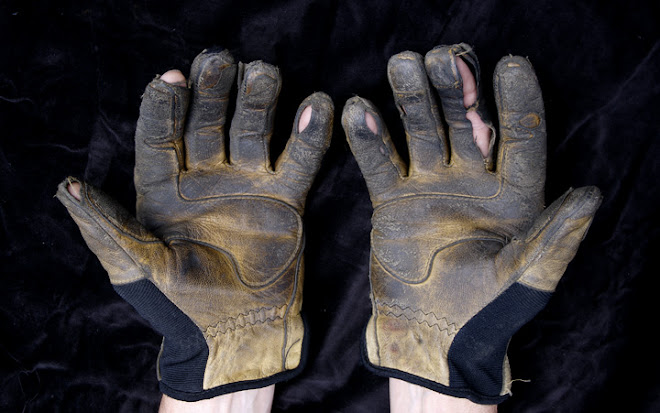When you absolutely need a snoot, but just don't have one...
(Photo courtesy of Shitty Rigs)
As explained to me by Sanjay Sami -- Chief Cook and Bottle Washer at The Grip Works and veteran dolly grip/steadicam operator -- the concept of "jugaad" is thus:
"To piece together available bits and make it work."
"Jugaad" is a term that comes from India, but it applies throughout the film business the world over. We've all been in a situation where the right piece of equipment wasn't on hand, at which point somebody on the crew figured out how to get the shot using what we did have. I love that kind of on-the-spot ingenuity. Sure, a 250 million dollar comic book blockbuster can afford whatever techno-wizardy they need to dazzle the future viewing audience, and although the resulting on-screen magic can be jaw-dropping, we expect no less from productions fueled on high-octane megabucks.
If money is no object, then where's the challenge? With a big enough budget, Rome really can be built in a day.
To me, the real magic comes in getting a difficult shot on a Disney budget that can't (or simply won't) pay for the gear required to do so.* As frustrating as it is to be told "we can't afford that" while still being expected to deliver the cinematic goods, it's very satisfying to pull a rabbit out of your hat by finding a way to get the job done with bubble gum and baling wire -- Jugaad.
As most of you already know, there's a great website called Shitty Rigs dedicated to displaying the fine art of cinematic Jugaad, even if that's not what we call it in Hollywood... but maybe we should.
I got to thinking about all this while reading another terrific post by Art Adams, a DP who paid his dues in LA for ten long years before moving to the SF Bay Area to further his career in a less toxic, less crowded, less alienating environment. LA isn't for everybody, and Art was smart enough to realize he'd never be happy there, so he pulled up stakes and moved four hundred miles north -- a bold move after investing a full decade in Hollywood. But he'd learned a lot in those ten years, and was able to carve out a very successful career far from Dodgertown. He's been sharing his collected wisdom writing for ProVideo Coalition, a website (owned, oddly enough, by Moviola in Hollywood) dedicated to sharing the experience of their many contributors.
In the website's own words:
ProVideo Coalition brings together the film industry’s best writers, bloggers and video experts under one URL. Each writer / filmmaker / contributor writes based on their personal knowledge and experience. PVC has become the leading resource for video professionals working in major studios and post houses, independent filmmakers, educators, students and storytelling enthusiasts as the place to go for news, information, reviews and training.
ProVideo dives deeply into the many aspects of post-production, but they cover on-set work as well. Art Adams is equally comfortable getting deep into the weeds discussing the ways he's solved various lighting problems on set (and on budget), or the technical aspects and aesthetic qualites of modern anamorphic lenses. In the former, he discusses when it really is worth spending the money on a crucial (and expensive) piece of equipment that when properly employed, can save time and money while making the money-shot possible.
This might not quite fit under the wide umbrella of Jugaad, but it's another example of how working smart can make sure that you keep getting called in the future -- and that's half the battle for a free-lancer. In that post, Art also details how even the most thorough planning can fly out the window when a client comes up with an objection on shoot day (something anybody who has worked in the high-pressure world of commercials can relate to in a big way), and how to go with the flow in salvaging the situation -- and the shooting schedule. He's well-versed in the state of the art in modern digital cinematography -- what works and what doesn't -- and goes into dizzying detail in these posts, which are instructive in all the right ways without being preachy or didactic.
The man isn't beating his chest, but simply trying to help, which is something you won't always find in Hollywood.
Any young juicers or camera assistants out there hoping to work their way up the film industry food chain can learn a lot from his extensive archives at Provideo -- so do yourself a favor and check them out.
* I absolutely loathe Disney with a bitter passion born of endless low-budget suffering, and invoke their spawn-of-Satan name here merely as an example of extreme budgetary penury...




No comments:
Post a Comment